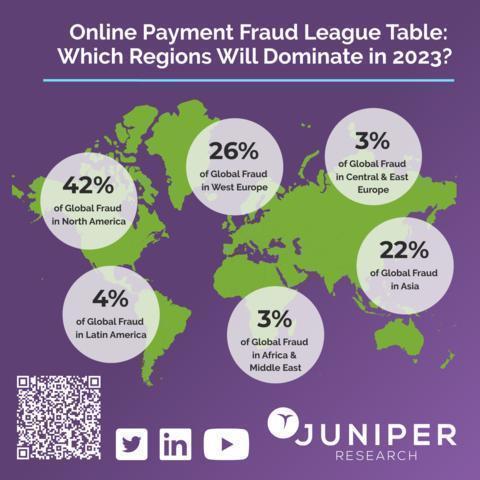Online payment frauds are increasing like never before due to the exploded adoption of smartphones and the Internet across the world. As a result, people are more likely to use alternative payment methods, such as digital wallets and Buy-Now-Pay-Later option, which are creating new fraud risks.
According to a recent study by Juniper Research, global e-commerce fraud loss is estimated to reach over $41 billion by the end of 2022. Surprisingly, this figure is estimated to increase a notable 16% YoY, to $48 billion by the end of the next year.
The report recommended that fraud prevention vendors must actively and aggressively focus on building platforms providing AI‑powered risk-based scoring, which can be payment method agnostic, to best suit changing market conditions.
Online payment fraud includes losses across sales of digital goods, physical goods, money transfer transactions and banking, as well as purchases like airline ticketing. Fraudster attacks can include phishing, business email compromises and socially engineered fraud.
North America Tops League Table for Fraud
The research identified North America at the target of the majority of cybercriminals. The region is having the largest fraudulent transactions by value and will account for over 42% of global eCommerce frauds in 2023, despite representing less than 7% of banked individuals globally. The research cites the vast volume of data breaches and the broad availability of stolen credit card information as key risk factors in this market.

Research author Nick Maynard explained: “To combat this fraud, eCommerce merchants must implement simple steps such as address verification, combined with risk-based scoring on transactions, which will allow merchants to best mitigate the massive fraud threats present.”
Additionally, the research found that the potential for fraud with BNPL is a major risk going forward. Given the delayed nature of BNPL payments, fraudsters can make several illegitimate payments using stolen card details before the fraudulent activity is identified, creating significant risk. In turn, the research recommended that BNPL vendors conduct robust identity verification at the point of onboarding to mitigate these risks.
The COVID-19 epidemic was a time when fraud from online transactions increased substantially across the globe. Large-sized general merchandise stores had to contend with an average of 70% more fraudulent attempts every month during the lockdown in 2020 than before. Some of the types of e-commerce frauds that have seen an increase during the covid and post-covid landscapes include account takeover (ATO), bot attacks, as well as unauthorised selling.
In 2022, the majority of these fraudulent methods are still causing losses to merchants. As criminals become increasingly sophisticated, their scam tactics are also evolving and keeping online retailers on their toes.

